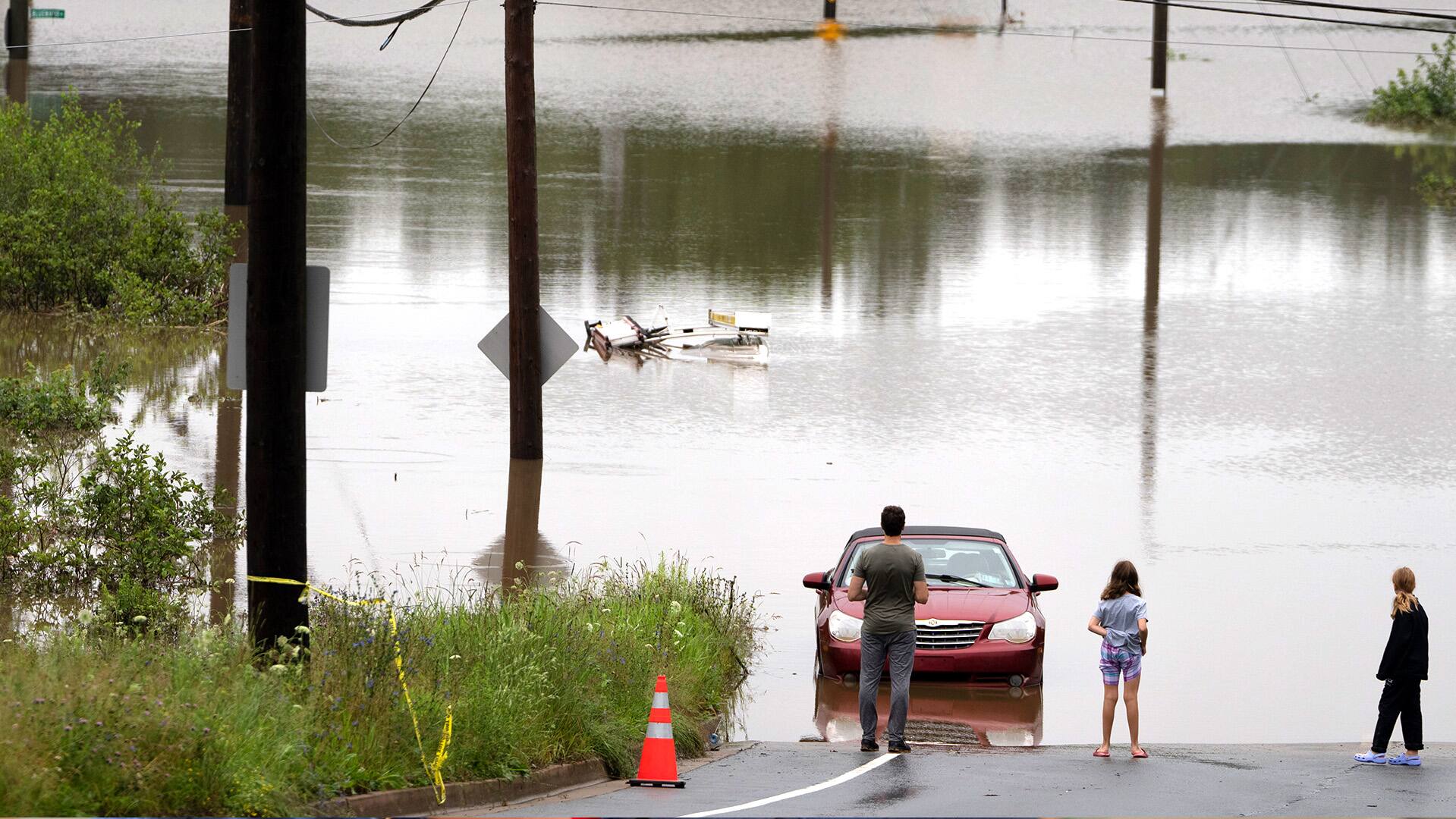Desjardins no longer offering mortgages in high-risk flood areas, worrying homeowners.

In May 2017, after two days of heavy rain, the river that runs along the shores of Pierrefonds-Roxboro, a suburban borough of Montreal, overflowed its banks, flooding hundreds of homes.
Tania Caro’s basement was submerged.
“It was hell for everybody,” she recalled. “We were woken up in the middle of the night by the firefighters and we were rushed out.”
Caro has been spared from another flood in the years since, but she lives on a 20-year flood plain, which means historically there’s been a five per cent risk of flooding in any given year.
Desjardins Group, a major financial institution based in Quebec, recently announced it will no longer offer new mortgages in high-risk flood zones — areas in the zero to 20-year flood plain — across the province. It also doesn’t provide flood insurance in those areas.
The announcement has sent shock waves through low-lying communities, from Charlevoix, north of Quebec City, to the suburban settlements of Montreal.

Many insurance companies across Canada already avoid flood zones. Roughly 1.5 million homes — about 10 percent of the housing market — are already unable to obtain flood insurance, according to the Insurance Bureau of Canada.
While wildfires wreaked havoc on many communities this summer, flooding remains the costliest weather-related event, and one where insurers can pinpoint which addresses are high risk.
If other mortgage providers follow Desjardins’ lead, experts warn there could be major consequences for individual home owners, and the housing market.
“What’s happening in Quebec is an indication of what could potentially happen going forward,” said Kathryn Bakos, managing director of finance and resilience at the Intact Centre on Climate Adaptation at University of Waterloo.
“It’s very significant, but it is not shocking. We can look to other areas across Canada that we have been driving in this direction for a while now.”
Home values affected
Homes in recently flooded areas can see a drop in value. A 2022 Intact report on how flooding can affect the housing market found the sale price of homes in the area dropped by eight per cent in the six months after a flood.
Studies have shown climate change has made rainfall more extreme and storms with extreme rainfall more frequent, and research predicts it will get worse. In a statement, Desjardins said it made the decision because “the impacts of climate change, including water damage, are growing in importance and causing substantial damage.”
The company said that less than five per cent of its mortgaged properties are in 20-year flood zones, but that homes in those areas are generally uninsurable, and it needs to account for the risks. The bank said it would continue to support clients “who wish to sell or refinance their property already financed with Desjardins, by allowing financing under certain conditions.”
Jim Beis, borough mayor of Pierrefonds-Roxboro, said the decision has many residents worried about the value of their homes, especially if other banking institutions follow suit.
“Folks that have these homes will be stuck with them,” he said.
“If they sell it, they’ll probably sell it at much less than it’s worth today. And so it has major consequences here.”
Beis said several thousand homes in his own community live in high-risk flood areas, with 30 kilometres of waterfront along the Rivière des Prairies, which runs along the north side of Montreal.
While Caro’s mortgage isn’t with Desjardins, she’s concerned it could affect her ability to sell her home if she ever wants to downsize.
“For sure, it’s scary,” she said.
Government-backed insurance
The federal government has been working toward a national flood insurance program since 2020, which experts say would help address the problem. The Insurance Bureau of Canada calls flooding Canada’s “greatest climate threat” and wants to see operational funding in the 2024 budget, rather just “a pledge or commitment.”
Joanna Kanga, spokesperson for Emergency Preparedness Minister Harjit Sajjan, said the government has been in talks with provincial and territorial governments to develop the program.
“We acknowledge the challenges many Canadians face as severe and more frequent climate-related disasters occur,” Kanga said in a statement.
In last year’s budget, the government set aside $32 million in funding for the program, aimed at protecting households at high risk of flooding and without access to adequate insurance.
The federal government has also announced plans to fund flood prevention in Canadian communities under a national adaptation strategy announced in 2022.

Better flood maps could save lives. Why are they so hard to find?
Flood risk maps help identify safe ground during a storm or flood and lay out where to avoid building, but they’re not readily available. CBC’s Tom Murphy breaks down why the maps are so hard to find.
A spokesperson for Quebec’s Environment Ministry said it is working to “modernize the management of flood zones to ensure the safety of Quebecers and the protection of their property.”
Ryan Ness, a climate adaptation expert with the Canadian Climate Institute, said the Desjardins decision is a pressing reminder that Canada needs to do more to protect homes currently at risk.
“Nobody will want to buy a house that they can’t get a mortgage on,” he said.
A national flood insurance program will help, but longer-term solutions are necessary so that the government isn’t on the hook for huge payouts.
Those include improved adaptation in flood-prone areas, from embankments to flood-resistant roads. But he said stricter zoning rules will also be needed, even as Canada looks to address its housing crisis by building more homes.
“There’s the potential that all this pressure could drive even more housing development in flood-prone areas,” he said.

ABOUT THE AUTHOR

Journalist
Benjamin Shingler is a senior writer based in Montreal, covering climate policy, health and social issues. He previously worked at The Canadian Press and the New Brunswick Telegraph-Journal.
With files from Alison Northcott
*****
Credit belongs to : www.cbc.ca
 Atin Ito First Filipino Community Newspaper in Ontario
Atin Ito First Filipino Community Newspaper in Ontario






